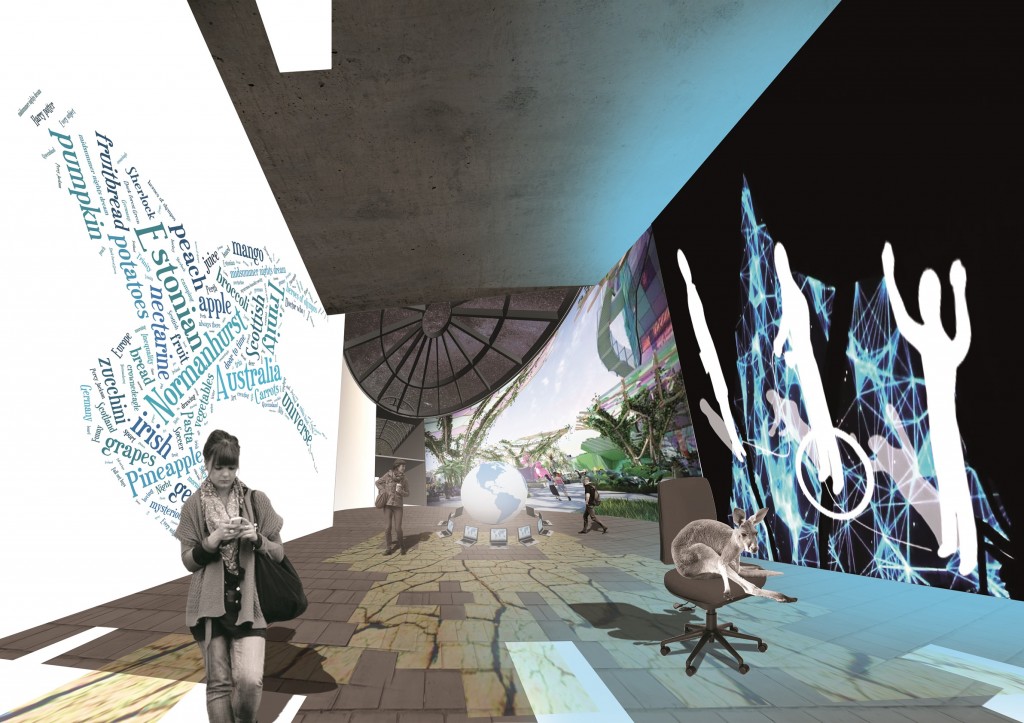
Students David Maclellan and Martin MacDonald proposed an interactive digital installation in the foyer of one of the privately owned buildings on Orchid Avenue. The purpose of this installation is to engage both tourists and locals to engage more closely with the current events and the history of Surfers Paradise.
Surfers Paradise hidden laneways and alleys have been re-imagined by Queensland College of Art Interior Design students.
The designs – from libraries, public forum spaces, hospitality, retail and art spaces — will be on show for one night, on Friday 10 June at the newly opened Paradise Alley.
Described as “urban interiors”, the spaces are public and urban by nature but intimate and interior in scale.
Interior Design lecturer Kirsty Volz cites Melbourne’s laneways as a great example of the success of urban interiors and their capacity to invigorate a city.
“Since their inception, they have not only revitalized the city, but become an integral part of the city’s identity,” she says.
“There is great potential for the Gold Coast to now make a similar move to enhance the alleys between buildings on Orchid and Elkhorn Avenue, the pathways connecting Orchid Avenue to Surfers Paradise Boulevards, the passages through abandoned shopping centres and the purpose built laneways.”
She saidthe first task for students was to map out these urban interiors using a technique called Nolli Maps.
“Giambattista Nolli first developed these maps in the 18th century to map out the urban interiors of Rome,” she says.
“Nolli maps involve drawing a map and shading the area of buildings in black and then leaving the spaces between buildings as white, as though carving out ‘urban rooms’ from between the built form of the city.
“From this, students could identify the best urban interiors of Surfers Paradise.”
Students then researched the social and physical history of Surfers Paradise, as well as reading town planning documents that describe proposed economic and infrastructure future for the precinct.
From their research and observations, the students developed a range of urban interior interventions for Surfers Paradise.
The students’ work will be on show on Friday 10 June at 6pm alongside a section of food trucks in the newly opened Paradise Alley space at 3216 Surfers Paradise Boulevard.
